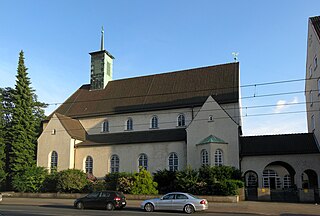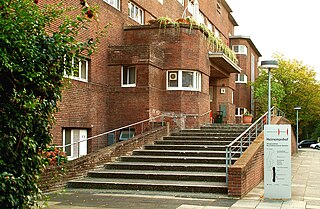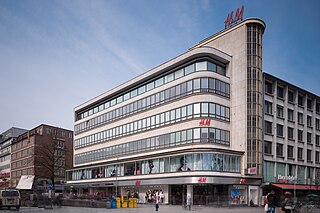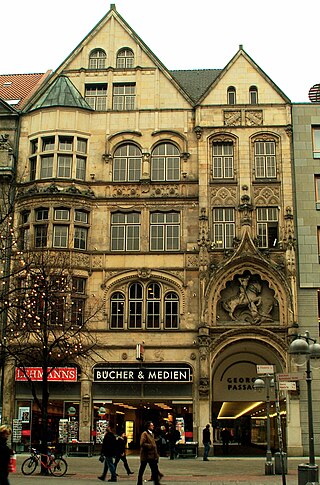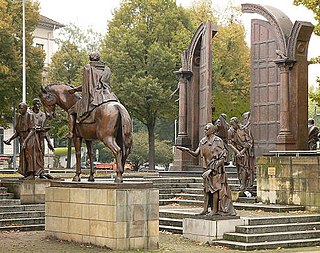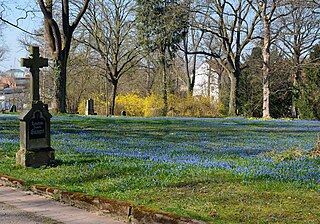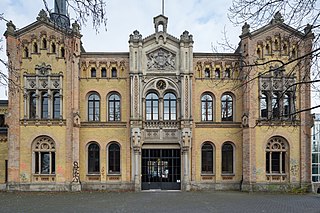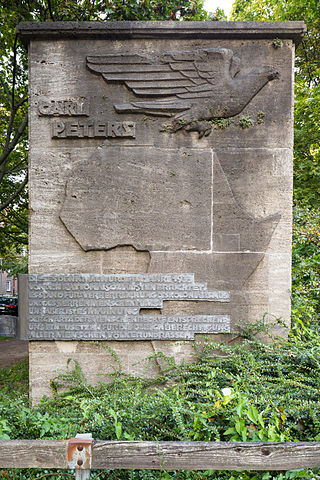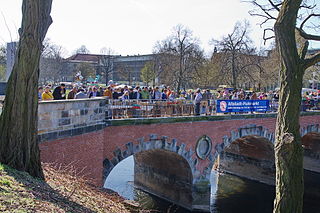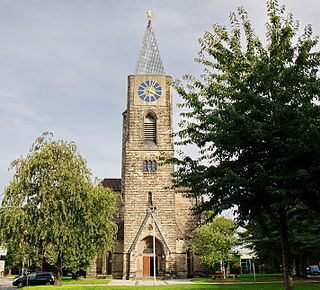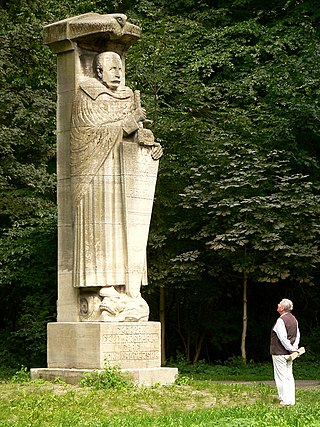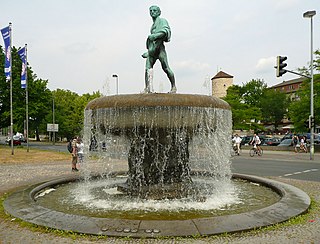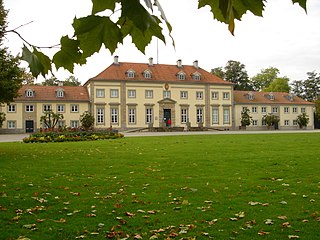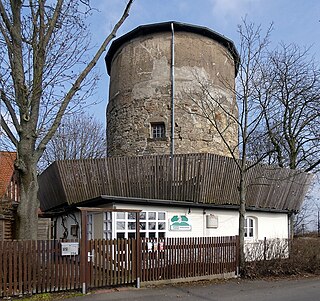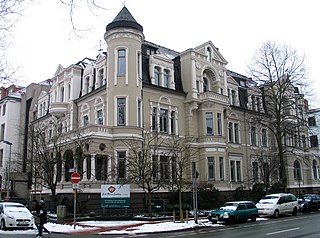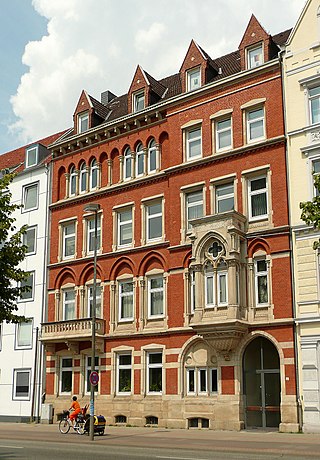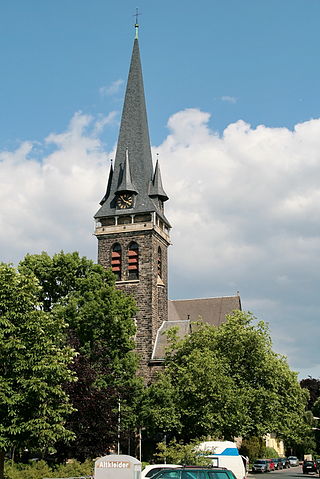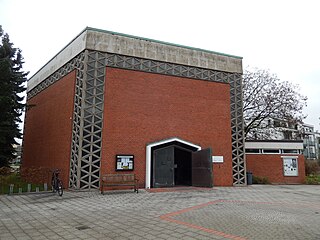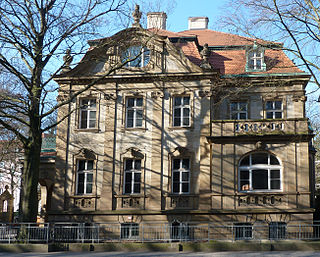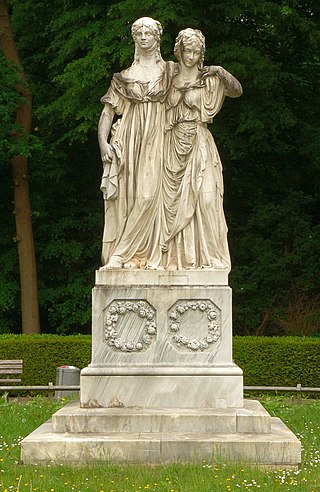100 Sights in Hanover, Germany (with Map and Images)
Legend
Welcome to your journey through the most beautiful sights in Hanover, Germany! Whether you want to discover the city's historical treasures or experience its modern highlights, you'll find everything your heart desires here. Be inspired by our selection and plan your unforgettable adventure in Hanover. Dive into the diversity of this fascinating city and discover everything it has to offer.
Sightseeing Tours in HanoverActivities in HanoverSea Life is a chain of commercial sea life-themed aquarium attractions. As of April 2017 there are 53 Sea Life attractions around the world. The chain is owned by the British company Merlin Entertainments.
The Ernst August Monument is an equestrian statue in honour of the sovereign of the former Kingdom of Hanover, King Ernst August. It was created in 1861 by Albert Wolff and erected on Ernst-August-Platz in front of Hanover's main railway station. The monument is one of the most important meeting places in Hanover, along with the Kröpcke clock, which is commonly referred to as "Unterm Schwanz".
The Market Church is the main Lutheran church in Hanover, Germany. Built in the 14th century, it was referred to in 1342 as the church of Saints James and George in dedication to Saint James the Elder and Saint George. Replacing an older, smaller, church at the same location that dated to 1125 and that is known to have been called St. Georgii in 1238, Hanover grew around it and the market place situated immediately adjacent to its south that was established around the same time. Today the official name of the church is Market Church of Saints George and James, and along with the nearby Old Town Hall is considered the southernmost example of the northern German brick gothic architectural style.
Wikipedia: Marktkirche, Hanover (EN), Website, Heritage Website
The Markthalle Hannover is a market hall in Hanover, which was put into operation in 1954 and is now popularly known as the belly of Hanover. The market hall is located opposite the Old Town Hall on the edge of the old town. The predecessor building, built here in 1892, was largely destroyed in the Second World War during the air raids on Hanover in 1943 and later demolished.
The Great Fountain is located in the Great Garden in the Herrenhausen district of the Lower Saxony state capital Hanover. The fountain reaches a height of around 70 to 80 metres and is one of the highest in Europe. Since its regular commissioning in 1720, it has been one of the main attractions of the Great Garden as one of the most important Baroque gardens in Europe.
The House of Economic Development in Hanover contains all economic departments of the city and the Hanover region, which in a broader sense deal with economic development and marketing of existing or to be founded companies as well as the region itself. "Under one roof", citizens will find in particular the funding and advisory services of the service providers Hannover Marketing Tourismus (HMTG), Hannover Region Tourismus, hannover.de Internet GmbH and hannoverimpuls. The location of the house is Vahrenwalder Straße 7 in the Vahrenwald district.
Wikipedia: Haus der Wirtschaftsförderung (Region Hannover) (DE)
7. Welfengarten
The Welfengarten in the Hanover district of Nordstadt is a city park in the style of English landscape gardens. Together with the Great Garden, the Berggarten and the Georgengarten, it belongs to the Herrenhausen Gardens.
8. Saxon Steed
The list of monuments in Hanover contains a number of selected monuments, memorials, sculptures, artistic objects of sculpture ("street art") and fountains in public spaces, especially in the area of the city center of Hanover. These objects are not congruent with (cultural) monuments within the meaning of the Lower Saxony Monument Protection Act.
9. Lutherkirche
Die Lutherkirche in Hannover ist eine evangelische Kirche, die seit 2006 auch als Jugendkirche genutzt wird. Das Gebäude wurde 1895–1898 als letzte der drei großen Nordstädter Kirchenbauten von Rudolph Eberhard Hillebrand auf einem annähernd dreieckigen Baugrundstück im Zentrum der Nordstadt erbaut. Mit ihren zwei mächtigen Turmhelmen, umgeben von mehreren seitlichen Helmen, bot die Kirche bis kurz vor Kriegsende einen imposanten Anblick, an den heute nur noch wenig erinnert.
Wikipedia: Lutherkirche (Hannover) (DE), Website, Heritage Website
10. Christuskirche
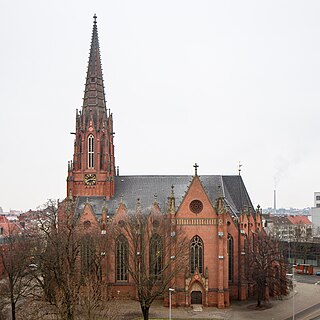
The Christuskirche is an Evangelical Lutheran church in Hanover, Germany. It is located in the Nordstadt district northwest of the Klagesmarkt and was built between 1859 and 1864 by Conrad Wilhelm Hase as the residence church of George V. The neo-Gothic brick building is the first new church building in Hanover after 1747 and a model church according to the Eisenach Regulation, a recommendation issued in 1861 for the design of Protestant church buildings, which existed until 1890. As a residence church, the Christuskirche was used only once. However, there is still contact with the former Hanoverian royal family – through the patronage of Ernst August, Prince of Hanover.
11. City Wall
The city fortifications of Hanover were a system of defensive fortifications of the city of Hanover in the period from about 1200 to 1800. The city fortifications, which were built in the Middle Ages, enclosed the city at that time, today's old town. It included a city wall built around 1300 with wall and gate towers as well as city gates, of which hardly any remains remain. Of the Hanoverian Landwehr, which was located in front of the city, ditches, ramparts and watchtowers still bear witness. Almost the highest level of development of the city fortifications was reached at the beginning of the 17th century as a bastion fortification based on the Dutch model. In 1646, the Calenberg Neustadt was included in the Sternschanzen-shaped complex as an upstream, new district. Reactivated again in the Seven Years' War until 1763, the demolition of the fortifications began immediately afterwards due to the lack of military value and to gain space for new urban planning projects.
12. Waterlooplatz
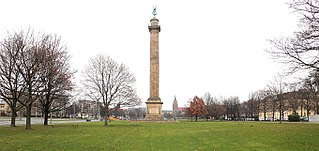
Waterlooplatz in Hanover is a four-hectare lawn in the Calenberger Neustadt district. The Waterloo Column stands on the square. The square and column were built in the 19th century to commemorate the Battle of Waterloo. While the square originally surrounded a barracks area when it was built in the first half of the 19th century, it is now located in the middle of the government and administrative district of the Lower Saxony state capital.
13. Herrenhäuser Gärten
The Herrenhausen Gardens of Herrenhausen Palace are located in Herrenhausen, an urban district of Hanover, the capital of Lower Saxony, Germany. Dating to the era of the Kings of Hanover, they comprise Great Garden, Hill Garden, Georgen Garden and Guelf Garden.
14. Anzeiger-Hochhaus
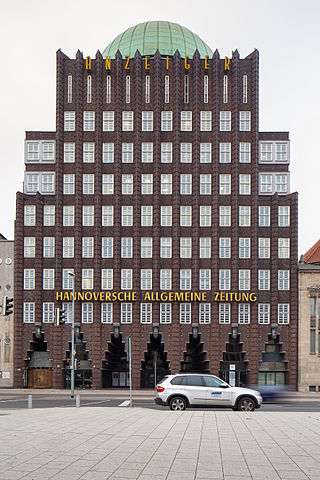
The Anzeiger high-rise in Hanover was built in 1927–1928 in the style of brick expressionism according to a design by Fritz Höger as the publishing house of the Hannoversche Anzeiger and was one of the first high-rise buildings in the German Reich. The 51-metre-high building with ten storeys is located in the Mitte district near Steintor-Platz and, with its characteristic roof dome, has a high recognition value in the capital of Lower Saxony.
15. Stadtbibliothek Hannover
The Hanover City Library is a public library in Hanover, Germany. It includes the central city library on Hildesheimer Straße, 17 district libraries and a mobile library with a book bus. It is integrated into the Hanover city administration as the City Library Department in Department VII - Education and Culture.
16. Waterloo Column
The Waterloo Column is a 46.31-metre-high Victory Column in the Hanover district of Calenberger Neustadt. It was built on Waterlooplatz between 1825 and 1832 according to a design by Georg Ludwig Friedrich Laves. It is crowned with a statue of Victoria, the goddess of victory, derived from Roman mythology. Its style is based on classical antiquity and is based on the Doric column order.
17. Gartenkirche St. Marien
The Garden Church of St. Mary is the church of the Evangelical Lutheran Garden Church congregation in the Warmbüchenviertel in the Hanover district of Mitte. It is located in Marienstraße in the middle of the garden cemetery with classicist grave monuments from the 19th century.
Wikipedia: Gartenkirche St. Marien (DE), Website, Facebook, Heritage Website
18. Schleuse Anderten
The Anderten lock, also known as the Hindenburg lock, in Hanover-Anderten overcomes a height difference of 14.70 m between the west and the crest of the Mittelland Canal. At the time of its inauguration in 1928, it was the largest inland lock in Europe.
19. St. Martinskirche
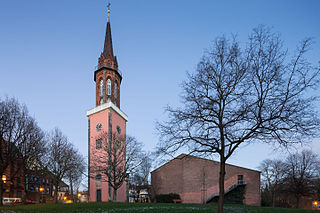
The St. Martin's Church or St. Martin is the oldest Evangelical Lutheran church in Linden, which today belongs to Hanover, and the parish church of the St. Martin's parish. The church building is based on a first building from the 13th century and a Baroque successor building from 1728, which, except for the church tower, was destroyed by the air raids on Hanover in the Second World War. The new nave was built in 1957 according to a design by the architect Dieter Oesterlen.
20. Villa Simon
The Villa Simon is a building located in Hanover on Königsworther Platz in the district of Calenberger Neustadt. It was built in 1858–1860 as the residence of Eduard Simon, a lawyer of Jewish origin. Jewish families were forcibly admitted to the neo-Renaissance style villa during the Second World War. The building survived the air raids on Hanover during the war undamaged. Today, institutions of the Gottfried Wilhelm Leibniz University of Hanover are housed here.
21. TAK Theater am Küchengarten
The TAK, also known as Theater am Küchengarten, in Hanover in the Linden-Mitte district, is a small cabaret stage with 130 seats. It presents satire, cabaret, chansons and upscale nonsense at about 170 performances per season. The TAK is the only professionally operated facility of its kind in Lower Saxony.
22. Wasserturm
The Hannover Water Tower is a 62 m high and listed former water tower in Hanover, which is located on Vahrenwalder Straße in the Brink-Hafen district. When it was completed in 1911, it was considered the largest water tower in Europe.
23. BUSSTOPS
BUSSTOPS in Hanover is an art project with originally twelve half-open bus shelters for trams and city buses of the üstra. It was part of a project on art in public space between 1990 and 1994 and was created on the initiative of the Lower Saxony Foundation in cooperation with üstra and Toto-Lotto Niedersachsen. The design project was carried out by internationally renowned architects and designers. The task for the artists was to create art as an extraordinary part of an ordinary service.
24. Stadtfriedhof Stöcken
The Stöcken City Cemetery is a municipal cemetery of the city of Hanover in the district of Stöcken. It was opened in 1891 as the second city cemetery and was enlarged in several steps over the next decades. Today, the cemetery covers 55 hectares, and 170,000 people have been buried here since 1891. The cemetery contains graves of prominent people, including the Prime Minister of Lower Saxony, Hinrich Wilhelm Kopf, and the Madsack publishing family. Remains of the victims of the serial killer Fritz Haarmann were also buried here.
25. Philosophische Fakultät
J. C. König und Ebhardt was a printing company that was founded in Hanover in 1845 and went bankrupt in 1999. Through technical innovations, J. C. König und Ebhardt was a leading company in printing technology for a long time, which made a decisive contribution to Hanover's reputation as a printing centre. It is considered the world's first business book factory and was the most important for almost 150 years. The company employed internationally renowned artists as graphic designers.
26. Hiroshima-Gedenkhain
The Hiroshima Grove, also known as the Hiroshima Memorial Grove, in Hanover was created in 1987 in a park on the Eilenriede in the Bult district. It serves to commemorate the 110,000 Japanese who died during the atomic bombing of Hiroshima on August 6, 1945. The grove was created as part of the town twinning between the capital of Lower Saxony, Hanover, and the Japanese city of Hiroshima. It consists of a memorial with 110 cherry trees, art installations and a granite memorial stone. In addition to events on August 6, the complex also hosts a celebration of the Japanese Cherry Blossom Festival every year. In addition, it is a local recreation area.
27. Jüdischer Friedhof An der Strangriede
The Jewish cemetery An der Strangriede in Hanover is the second of four Jewish cemeteries in the capital of Lower Saxony. After the closure of the Old Jewish Cemetery on Oberstraße, it was opened in 1864. Until 1924, it was the main cemetery of the Jewish community of Hanover. With the brick construction of the sermon hall and about 2,600 preserved gravestones, the cemetery is an important historical site for the history of Hanover's Jews.
28. Leibniz Theatre
The Leibniz Theater was a cabaret and cabaret stage in Hanover, Germany, named after the philosopher Gottfried Wilhelm Leibniz. In addition to Hanoverian and international performers and theatre groups, foreign newcomers, comedians and musicians also performed as cabaret artists. Every year, more than 300 events took place in the Leibniz Theater with around 85 seats. The location was Kommandaturstraße 7 at the corner of Molthanstraße in the Calenberger Neustadt district. The theatre closed on 1 October 2023.
29. Gartenhaus
The Gartenhaus in Hanover is a residential building built around 1820, which is located in the Nordstadt district. It is a testimony to the originally rural settlement outside the former city fortifications of Hanover. The last house of former "garden people" was built as a simple classicist half-timbered building and can be found today at the address Am Judenkirchhof 10/10A. It is the oldest surviving residential building in the district and is a listed building.
30. Ökumenisches Kirchencentrum
The Ecumenical Church Centre Mühlenberg is located in the Mühlenberg district of Hanover. As an ecumenical centre, it houses the Evangelical Lutheran Bonhoeffer congregation and the Roman Catholic parish of St. Maximilian Kolbe.
31. Hinüberscher Garten
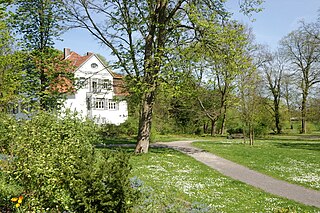
The Hinübersche Garten in Hanover is one of the earliest landscape gardens in Germany. It is located in the Marienwerder district in the northwest of the city. The Grüner Ring hiking and cycling trail runs through the garden.
32. GOP Variete
The Georgspalast, abbreviated GOP, in Hanover is a traditional variety theatre that has existed since the beginning of the 20th century. It is centrally located in the city centre in a striking, five-storey stone building opposite the Hanover Opera House.
33. St. Nicholas Church
The Evangelical Lutheran Church of St. Nicolai in Hanover is a listed neo-Romanesque church building with a bell tower dating back to the Middle Ages. The location of the building is the highest point of the historic village and at the same time the entrance to the old village centre in today's Bothfeld district at Sutelstraße 18–19.
34. Evangelischer Treffpunkt
The Vahrenwald Church was an Evangelical Lutheran church in the Vahrenwald district of Hanover, Germany. The parish, which was founded on 1 October 1924, built the church building largely on its own after the Second World War. On May 19, 2013, the church was deconsecrated and, after demolition, a newly built church center was built on the same site.
35. Leibniztempel
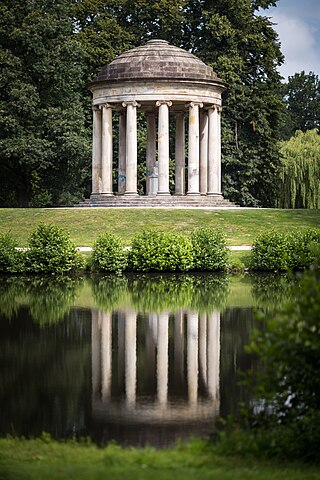
The Leibniz Temple in the Georgengarten in Hanover is a pavilion building that was built from 1787 to 1790 in honor of the citizen and polymath Gottfried Wilhelm Leibniz (1646–1716), who worked in Hanover. It is considered the first public monument in Germany for a non-nobleman. The open, roofed round temple made of sandstone with twelve Ionic columns bears the inscription "Genio Leibnitii" in gilded letters.
36. Maschpark
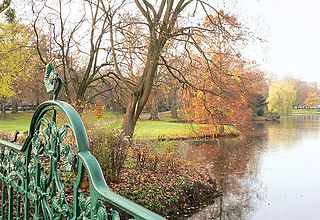
The Maschpark in Hanover's Mitte district is a 10-hectare park south of the old town. It was built around 1900 and was the first municipal park in Hanover. The complex has not changed its original form and is a testimony to German garden art at the end of the 19th century. In the north, the Maschpark is bordered by the Friedrichswall. Between Maschteich and Friedrichswall, the New Town Hall was completed in 1913.
37. St. Marien
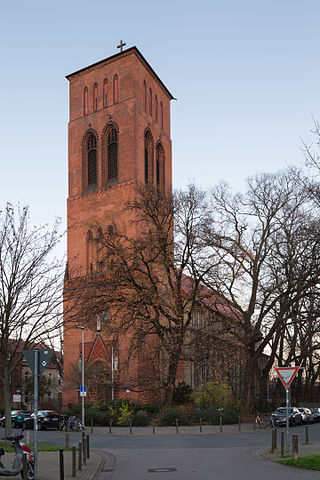
St. Mary's is a Roman Catholic parish church in Hanover, Germany. The church, named after Mary, is located at Marschnerstraße 30 and belongs to the parish of St. Maria in the Hanover deanery of the Diocese of Hildesheim.
Wikipedia: St. Marien (Hannover-Nordstadt) (DE), Website, Heritage Website
38. Neuer Sankt-Nikolai-Friedhof
The new St. Nikolai cemetery in Hanover, also called Strangrieder cemetery, was created between the Strangriede and Military Road from 1863 to 1866. The cemetery site surrounded by university buildings, hospitals, houses and villas is designed to be parked. The focus in 1890 is based on plans by Friedrich Hölscher (1859–?) Built-in neo-Gothic brick chapel.
39. Sprengel Museum
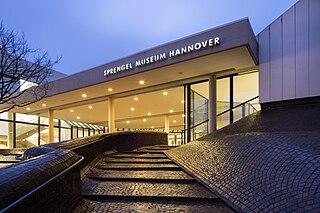
Sprengel Museum is a museum of modern art in Hanover, Lower Saxony, holding one of the most significant collections of modern art in Germany. It is located in a building situated adjacent to the Masch Lake approximately 150 metres (490 ft) south of the state museum. The museum opened in 1979, and the building, designed by Peter and Ursula Trint and Dieter Quast, was extended in 1992.
40. Kröpcke Clock
The Kröpcke Clock in Hanover is one of the traditional meeting places in the city. As one of the landmarks of the capital of Lower Saxony, the clock now also serves as a showcase for changing art exhibitions and presentations. The Kröpcke is located as a "square-like extension" in the pedestrian zone in front of Café Kröpcke at the intersection of Georgstraße with Bahnhofstraße and Karmarschstraße as well as Rathenaustraße in the Mitte district.
41. Dr. Buhmann Schule
The Dr. Buhmann Schule gGmbH in Hanover is a vocational school with the core competencies of business, management and languages. The educational institution for young people and adults offers basic training for young professionals as well as further training. The headquarters of the non-profit GmbH is Prinzenstraße 13 in Hanover-Mitte in a listed building. It was founded by Friedrich Buhmann in 1907.
Wikipedia: Dr. Buhmann Schule (DE), Website, Facebook, Youtube
42. Hindenburgvilla
The Hindenburgvilla is an upper-middle-class villa in Hanover, Bristoler Straße 6, in the Zoo district. It bears its name after the most famous former resident, Paul von Hindenburg. Despite considerable changes, the building is a listed building.
43. Beginenturm
The Beguinage Tower is a listed fortified tower on the Hoher Ufer in Hanover, Germany. The tower was first mentioned in 1357 as "De nye Torn" and was part of the city fortifications of Hanover. It was originally built in the Garden of the Beguines.
44. Volkssternwarte Hannover
The Volkssternwarte Hannover is a public observatory operated by the non-profit association Volkssternwarte Geschwister Herschel Hannover e. V. It is located in Hanover on the 89 m high Lindener Berg and there on the roof terrace of the water reservoir on the Lindener Berg, which was completed in 1878.
45. Telefunken-Gebäude
In the mid-1970s, the Telefunkenwerk Hannover was the second largest company in the metal industry in Hanover with almost 5000 employees. From 1972, the plant was the headquarters of Telefunken Fernseh und Rundfunk GmbH, a 100 percent subsidiary of the AEG-Telefunken Group. After the invention of PAL for color television and its subsequent introduction in Germany in 1967, Telefunken was the market leader in color television sets. From 1979 onwards, jobs in Hanover were gradually reduced; the last production hall was closed in 1993.
46. Baitus Sami Mosque
The Baitus Sami Mosque is located in the German city of Hanover. It has both a dome and minaret, although the minaret is too slender to be climbed. Built by an Ahmadiyya community, the mosque comprises approximately 2,800 square metres (30,000 sq ft), with space for 300 worshippers. Situated at a street in an industrial area outside a nearby residential area, it was inaugurated in August 2008 by the Caliph of the community, Mirza Masroor Ahmad. The construction of the mosque was opposed by many local people, with sometimes violent protests.
47. WOK - World of Kitchen
The WOK – World of Kitchen Museum in Hanover is the first major museum for kitchens in Europe. It was opened on 15 April 2010 in the company building of the former Fehling printing plant in the List district. The museum is run by the WOK-World of Kitchen Museum e. V. association.
48. Steinkistengrab von Anderlingen
The stone box of Anderlingen is the most famous stone box in Germany, which was built about 3,400 years ago in the early Bronze Age. It was found in 1907 in a hill near Anderlingen in the district of Rotenburg (Wümme) and translocated to Hanover.
49. Zu den heiligen Engeln
Zu den heiligen Engeln is a Catholic parish and church in Hanover-Kirchrode, Lower Saxony, Germany. The church was built in 1964 on a design by Josef Bieling, and was remodeled in 2014. It is now the parish church of a larger parish, serving the district Kirchrode-Bemerode-Wülferode. It belongs to the deanery of Hanover and the Diocese of Hildesheim. The church is dedicated to the angels.
50. Ehrenfriedhof am Maschsee-Nordufer
The Cemetery of Honour on the north shore of the Maschsee in Hanover is a listed cemetery created in 1945 in honour of a total of 526 prisoners of war and concentration camp prisoners of various nationalities, including 154 citizens of the former Soviet Union, who were murdered on 6 April 1945 by members of the Gestapo headquarters in Hanover. While these crimes committed by the Nazis at the end of the war were intended to cover up injustice and cruelty, the creation of the cemetery of honour on the Arthur-Menge-Ufer on the north shore of the Maschsee was deliberately chosen as a central inner-city location behind the New Town Hall for commemoration.
51. Evangelisches Kirchenzentrum Kronsberg
The Evangelical Kronsberg Church Centre is a place of worship in the Kronsberg neighbourhood of Hanover, in Lower Saxony, Germany. The Church belongs to the St. Johannis-Kirchengemeinde Bemerode parish, within the Evangelical-Lutheran Church of Hanover. The church centre is a simultaneum, hosting Baptists as well as Lutherans for prayer services.
52. Pferdeturm
The Pferdeturm is a late medieval watchtower of the city of Hanover from the 14th century, which was part of the Hanoverian Landwehr. The former marshalling yard and today's siding yard, the adjacent ice stadium at the Pferdeturm and a nearby exit of the Messeschnellweg are named after the tower, which stands at the Eilenriede city forest.
53. Stadtpark
The Stadtpark Hannover (Stadthallengarten) in Hanover is located south of the Hannover Congress Centrum in the Zoo district. It is bordered by Clausewitzstraße in the east and Kleefelder Straße in the south.
54. Friedrich Schiller
The Schiller Monument in Hanover stands in the pedestrian zone of Georgstraße at the junction of Schillerstraße in the Mitte district. The statue honors the poet Friedrich Schiller and is a listed building. Its history goes back to the Kingdom of Hanover.
55. Laves House
The architect, urban planner and civil engineer Georg Ludwig Friedrich Laves (1788–1864) had the Laveshaus at Friedrichswall 5 in Hanover built as his own residence from 1822 to 1824 and lived in it until the end of his life. Laves had been active as court architect of the Kingdom of Hanover since 1814 and was a representative of classicism.
56. St.-Martin-Kirche
St. Martin is a Roman Catholic church in the Hanover district of Groß-Buchholz. It is the parish church of a parish with four parishes, which has around 12,000 members. In addition, the churches of the Carmel of St. Joseph in Groß-Buchholz and the church of the Polish Catholic Mission in Hanover, Maria Frieden, belong to St. Martin. The parish belongs to the Hanover deanery of the Diocese of Hildesheim. Since 2019, it has belonged to the pastoral area of Hanover-East.
57. Pagode Viên Giác
The Viên Giác Pagoda and the associated monastery in the Hanover district of Mittelfeld is a religious center of Vietnamese Buddhists, one of eight Vietnamese Buddhist pagodas in Germany and one of the largest pagodas in Europe. It is supported by the non-profit association "Congregation of the Vietnamese Buddhist Church (CVBK), Department in Germany".
58. Stadtfriedhof Ricklingen
The Ricklingen City Cemetery in Hanover was established in 1908 as the Linden Main Cemetery by the then city of Linden and today belongs to the Oberricklingen district. The old chapel was built in 1910 according to plans by the Linden architect Carl Arend. The cemetery covers about 54 hectares with around 30,000 graves. Since 1998, there has been a department for anonymous urn burials.
59. St. Godehard
St. Godehard is a Catholic parish church in the Hanover district of Linden-Mitte. It was built between 1873 and 1874 according to plans by the architect Christoph Hehl and consecrated on 4 October 1874 by Bishop Wilhelm Sommerwerck. It bears the name of St. Godehard, who was bishop of Hildesheim in the 11th century. Her parish of the same name belongs to the Hanover deanery of the Diocese of Hildesheim.
60. Church of the Holy Cross
The Church of the Holy Cross is a Lutheran church in the centre of Hanover, the capital of Lower Saxony, Germany. A Gothic hall church, it is one of three churches in Hanover's old town – the other two being Market Church and Aegidien Church, although the latter is now a war memorial.
Wikipedia: Kreuzkirche, Hanover (EN), Website, Heritage Website
61. Gnadenkirche zum Heiligen Kreuz
The Gnadenkirche zum heiligen Kreuz is an Evangelical Lutheran church on Lehrter Platz in Hanover-Mittelfeld, Germany. Created after the Second World War and initially shaped by displaced persons, its name refers to the Gnadenkirche in Silesia. There was also a long-standing partnership with the Protestant community in Militsch, whose church of grace was the namesake.
62. Broyhan House
Broyhan House is a residential and commercial building constructed in 1576 in Hanover's historic old town. It is the second-oldest preserved half-timbered building in Hanover, and stands on the cellar walls of an earlier building dating to the 14th century. The house is named after Cord Broyhan, a brewer who lived in an earlier building from 1537 until 1561.
63. Spartan Stone
The Seven Men Stone, also known as the Tombstone of the Seven Men or Spartan Stone, is a cross stone at the Aegidienkirche in Hanover, which depicts seven praying men. It is intended to remind us of the legend of "Hanover's Spartans", who are said to have been burned in 1480 during an attack on the Döhren tower together with the tower. The Siebenmännerstein used to be one of the seven landmarks of Hanover that every wandering craftsman had to know.
64. St. Joseph
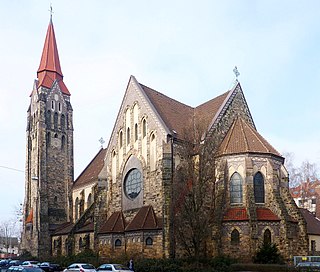
St. Joseph is a Catholic parish church in the List district of Hanover, Lower Saxony, Germany. Her parish of the same name belongs to the deanery of Hanover in the diocese of Hildesheim. The church is located at Steinmetzstraße 1, the neighboring parish office at Isernhagener Straße 64. It was built in 1911 and 1912 according to plans by Maximilian Jagielski and named after the biblical figure of Joseph of Nazareth.
65. Cella St. Benedikt
The Cella Sankt Benedikt in the Hanover district of List is a branch of the Roman Catholic Benedictine Abbey of Königsmünster in Meschede. It is located in an apartment building from the Wilhelminian period at Voßstraße 36.
66. St.-Elisabeth-Kirche
St. Elisabeth is a Catholic church in Hanover, Germany. It is the third oldest Catholic church in the city after St. Clemens and St. Marien and belongs to the parish of St. Heinrich in the Hanover deanery of the Diocese of Hildesheim.
67. Flusswasserkunst
The Flusswasserkunst in Hanover was a castle-like waterworks on the main arm of the Leine built in 1895 in the Neo-Renaissance style and demolished in 1963/64. The building rose at the level of the Friederikenbrücke across the Leineschloss. Since the founding of the Hannoversche Stadtbaukultur e.V. association in 2008, there have been plans to rebuild the important technical structure, especially since the urban development framework plan of Hannover City 2020 + provides for numerous changes around the former construction site.
68. Mahnmal Gerichtsgefängnis Hannover
The Hanover Court Prison Memorial is a memorial in Hanover, which is located behind the main train station and the Raschplatz on the Lister Meile in front of the entrance to the pavilion. It is reminiscent of the court prison that used to be located here, which was built in 1865–75 as the Royal Cell Prison Hanover. The most diverse victims and groups of victims of the National Socialists suffered in it. It is also the first municipal memorial in the Federal Republic of Germany that explicitly commemorates the persecution of homosexual men during the Nazi era.
69. Fürstenhaus Herrenhausen
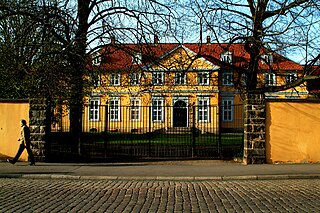
The Fürstenhaus Herrenhausen Museum in Hanover-Herrenhausen is a palace owned by the Guelph family, which was used as a museum from 1955 to 2011. The listed palace, which could also be booked for events for a long time, showed furniture, paintings, porcelain and sculptures on the ground floor. It has been closed to the public since 2011.
70. Goseriedebad
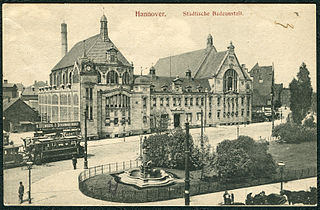
The Goseriedebad was an indoor swimming pool in Hanover, Germany, which opened in 1905 and closed in 1982 and is named after its location on the street Goseriede near Steintorplatz. After renovations in the 1980s and 1990s, the former indoor swimming pool is now used by the Kunstverein Kestnergesellschaft and the private radio station radio ffn.
71. Museum August Kestner
The August Kestner Museum, previously Kestner-Museum, is a museum in Hanover, Germany. Founded in 1889, the museum was renamed in December 2007 to avoid confusion with the Kestnergesellschaft, a local art gallery.
72. Mahnmal für das Sammellager Altwarmbüchener Moor (Sinti)
The memorial for the Sinti in the Altwarmbüchener Moor in Hanover commemorates the Sinti who were interned in a collection camp in the Altwarmbüchen Moor during the National Socialist era and then deported to extermination camps such as Auschwitz-Birkenau. The location of the memorial is the Moorwaldweg in the Lahe district, about 250 metres after the turn-off from Kirchhorster Straße.
Wikipedia: Mahnmal für die Sinti im Altwarmbüchener Moor (DE)
73. St. Antonius
St. Antonius is the Catholic church of the Kleefeld district of Hanover and was also the monastery church of the former Franciscan convent. A daycare center of the same name is located in the community center next to the church. Today it belongs to the parish of St. Martin with its seat in Hanover-Roderbruch in the Hanover deanery of the Diocese of Hildesheim.
74. Heinemanhof
The Heinemanhof in Hanover is a former Jewish women's convent built by the architect Henry van de Velde in the early 1930s. The Bauhaus-style building, which is classified as a "nationally valuable cultural monument", now serves as a non-denominational care and "competence centre for dementia" in the capital of Lower Saxony. The location is located in Heinemanhof Street on Brabeckstraße in the Kirchrode district.
75. Kaufhaus Magis
The Magis department store in Hanover is a listed fashion and textile department store from the 1950s. The department store is located on Kröpcke. Its address is Georgstraße 31/33, corner of Bahnhofstraße.
76. Hl. Herz Jesu
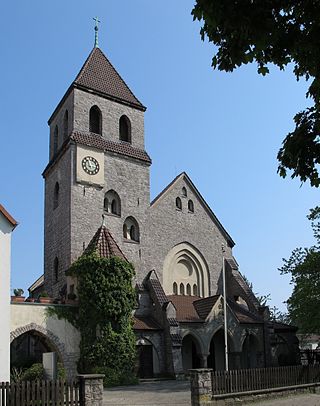
The Columbarium of the Sacred Heart of Jesus in the Hanover district of Misburg-Süd is an urn burial site as well as a prayer and worship room under the sponsorship of the Catholic parish of St. Martin, Hanover-East.
77. Drachentöterhaus
The Dragon Slayer House in Hanover is a commercial building built between 1900 and 1901 at Georgstraße 10 at the level of the Schiller Monument. The heritage-listed, richly decorated sandstone façade of the house is best known for the figure of Saint George as a dragon slayer, carved almost three-dimensionally by Werner Hantelmann above the Georgspassage.
78. Göttinger Seven
The monument to the Göttingen Seven in Hanover commemorates an important event in German constitutional history. It honours seven personalities from Lower Saxony's history of the 19th century, the so-called Göttingen Seven.
79. Philosophische, Juristische und Wirtschaftswissenschaftliche Fakultät
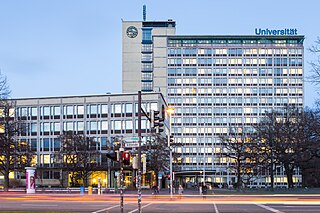
The Continental high-rise is a high-rise building in Hanover, Germany. When it was inaugurated in 1953, it was the tallest high-rise building in West Germany and the headquarters of Continental AG. The listed building complex at Königsworther Platz 1 in the Mitte district has been used by the University of Hanover since 1995.
80. Stadtfriedhof Am Lindener Berge
The Lindener Berg district cemetery is a cemetery laid out at the time of the Kingdom of Hanover, which today represents a listed park in Hanover. Its blue star (Scilla) bloom in March attracts thousands of visitors every year.
81. Marstallgebäude
The Welfenschloss Stables is the residence of the Technical Information Library at the Leibniz University Hannover. It was built in 1863–1867 during the reign of the last Hanoverian king, George V as the royal stables for the Welfenschloss palace.
82. Mahnmal gegen Kolonialismus
The Karl Peters Memorial Stone, also known as the Karl Peters Memorial and Plaque against Colonialism, is a monument originally erected in the mid-1930s in honor of Carl Peters, which was later redesigned as a memorial against colonialism. The location of the memorial stone in the public space of Hanover's Südstadt, which is also recorded as an architectural monument and as part of an ensemble, is the green area at the former address Am Karl-Peters-Platz 1 D on today's Bertha-von-Suttner-Platz.
83. Herrenhäuser Friedhof
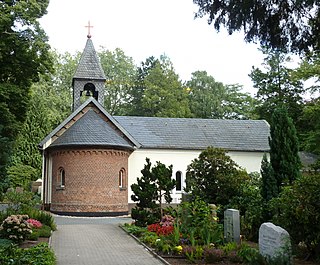
The Herrenhausen Cemetery in Hanover is a listed cemetery under the sponsorship of the Evangelical Lutheran parish of Herrenhausen-Leinhausen. The location of the cemetery, which was already laid out in the Kingdom of Hanover and expanded several times to around 1.4 hectares today, is Kiepertstraße 10 in the Herrenhausen district.
84. Martin Neuffer Bridge
The Martin-Neuffer-Brücke, until 2010 Marstallbrücke, in Hanover leads from the high bank of the old town to the opposite bank of the Leibnizufer. The current bridge, which is a listed building, was built in 1736/37 according to a design by Johann Paul Heumann and was named in December 2010 after the former Hanoverian mayor Martin Neuffer.
85. Petrikirche
The Evangelical Lutheran St. Peter's Church is a neo-Gothic style church in the Hanoverian district of Kleefeld. It is the seat of the superintendent's office of the Hanover-Southeast administrative area. Together with the Nicodemus Church, it forms a parish.
86. Georgenpalais
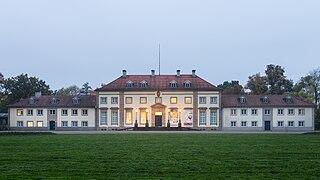
The Georgenpalais is a palace in the Georgengarten in Hanover, Germany. The palace was built between 1780 and 1782 by master builder Tänzel and was initially part of the Wallmodengärten as Wallmodenpalais or Wallmodenschlösschen. The client for the construction was Count Johann Ludwig von Wallmoden-Gimborn, who laid the foundation stone for today's Georgengarten with his plans.
87. Waldersee-Denkmal
The Waldersee Monument in Hanover is a colossal statue depicting Field Marshal Alfred von Waldersee exaggerated. The statue was created in 1914 and 1915 by the sculptor and architect Bernhard Hoetger. It forms the perspective closure of Kleine Pfahlstraße in Hanover's Oststadt district. The monument stands on the edge of the Eilenriede opposite the Villa Waldersee, which Alfred von Waldersee lived in from 1898 until his death in 1904.
88. Saint Nicholas' Chapel
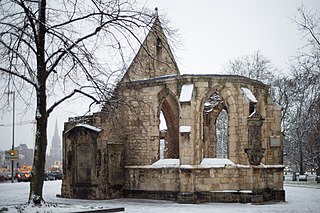
St. Nicholas' Chapel is an architectural heritage monument and the oldest building in Hanover, Germany. First built as a chapel dedicated to Saint Nicholas between 1250 and 1284 and a choir dating to 1325, it was damaged severely during the aerial bombings of Hanover during World War II. In 1953 the then approximately 700-year-old chapel was largely torn down to make way for a road as part of a larger post-war city-wide strategy to accommodate cars, with the currently 699-year-old choir left standing as a monument.
89. Duve-Brunnen
The Duve Fountain, also known as the Sämann Fountain, is a fountain in the Hanover district of Calenberger Neustadt, which is named after the entrepreneur Johann Duve (1611–1679). The fountain is located on the median strip of the Leibnizufer. It was created in 1916 by the sculptor Georg Herting.
90. Wilhelm-Busch Deutsches Museum für Karikatur und Zeichenkunst
The Wilhelm Busch Museum is a museum in Hanover, Lower Saxony, Germany. It features the world's largest collection of works by Wilhelm Busch, as well as contemporary comic art, illustrations and drawings.
91. Hardenbergsches Haus
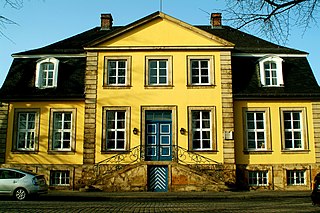
The Hardenbergsche Haus in Hanover is a villa that has been inhabited by the highest international personalities. Since its renovation in 2000, the building has served as a guest house and for special celebrations and conferences. The location of the listed villa is Alte Herrenhäuser Straße 10 at the end of the western Graft-Allee of the Great Garden in the Herrenhausen district.
92. Lindener Mühle
The Linden Windmill in Hanover, also known as the Linden Tower, is a listed former windmill on the Lindener Berg, which is built on top of a watchtower built in the Middle Ages. It is the oldest surviving building in Linden.
93. Villa Köhler
The Villa Köhler in Hanover is a listed villa in the Neo-Renaissance style. It was, among other things, the first residence of the General Field Marshal and later Reich President Paul von Hindenburg in Hanover and was temporarily called, as was his later Hanoverian residence, Villa Hindenburg. Today, the building at Am Holzgraben 1 and Wedekindstraße 14 and 15 in the Oststadt district is used by the construction and housing company Gundlach.
94. Wunder-Haus
The Wunder-Haus is a residential and commercial building built in the 19th century at Friedrichswall 17 opposite the New Town Hall in Hanover. It is a listed building and is named after its builder, the photographer Karl Friedrich Wunder.
95. Herrenhäuser Church
The German: Herrenhäuser Kirche in Hanover-Herrenhausen, Lower Saxony, Germany) is a church built in neo-Gothic style. Located close to the Herrenhausen Gardens, it belongs to the Lutheran congregation of the Herrenhausen-Leinhausen parish and is a listed historic building.
Wikipedia: Herrenhäuser Kirche (EN), Website, Heritage Website
96. Simeonkirche
The Simeon Church in Hanover is an Evangelical-Lutheran church building built in the mid-1960s by the Henriettenstiftung's old people's centre with a pentagonal floor plan. The location of the building, named after the prophet Simeon, is Schwemannstraße in the Hanover district of Kirchrode.
97. Villa Seligmann
The Villa Seligmann is a former upper-middle-class residential building in Hanover, Germany. It is located on Eilenriede in the Hanover-Oststadt district, Hohenzollernstraße 39. The villa was built between 1903 and 1906 according to a design by the architect Hermann Schaedtler for Siegmund Seligmann, the Jewish director of Continental AG, and his family. The listed building now serves as a venue for concerts and other events.
98. Königinnendenkmal
The Queen's Monument or Princess Monument on the edge of the Eilenriede in Hanover from the time of the German Empire at the beginning of the 20th century depicts the two princesses and later queens Luise of Prussia and Friederike of Hanover. Both were born in Hanover in the Old Palace opposite the Leine Castle as daughters of the later Duke of Mecklenburg-Strelitz Charles II. The sisters initially became princesses of Prussia through their double marriage to Crown Prince Friedrich Wilhelm (1770–1840) and Prince Friedrich Ludwig (1773–1796) in Berlin in 1793. A little later, from 1795 to 1797, the sculptor Johann Gottfried Schadow created the group of princesses that had previously been placed there for the Berlin Palace. This sculpture is now an exhibit in the Alte Nationalgalerie in Berlin. Through her third marriage to Ernst August I, Friederike became Queen of Hanover in 1837.
99. Altes Rathaus
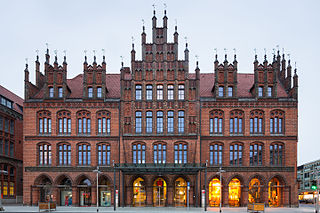
The Old Town Hall is a former, and the first, town hall in Hanover, Germany. Originally built in the old city district in 1410, replaced by the New Town Hall in 1913, and extensively restored in 1953 and 1964 after heavy bomb damage in World War II, it is the oldest secular building in the city. The market façade with the highly sophisticated Brick Gothic of the lucarnes has been preserved and partly restored in its medieval shape. Some elements of it were copied on other wings of the building.
100. Basilica St. Clemens
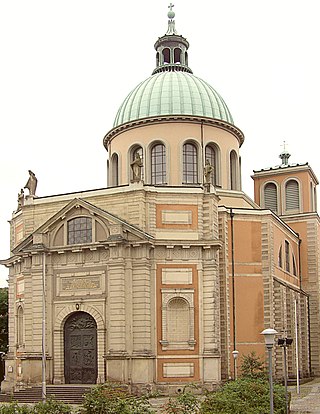
St. Clement's Basilica is the main Roman Catholic church in the city of Hanover. It is dedicated to Saint Clement of Rome. It is part of the parish of St. Heinrich and belongs to the Diocese of Hildesheim.
Wikipedia: St. Clement's Basilica, Hanover (EN), Website, Website, Heritage Website
Share
How likely are you to recommend us?
Disclaimer Please be aware of your surroundings and do not enter private property. We are not liable for any damages that occur during the tours.
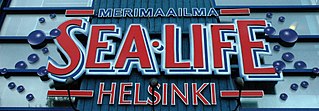
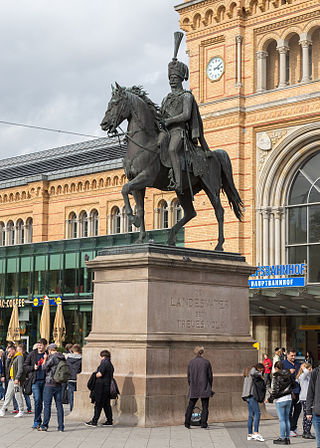
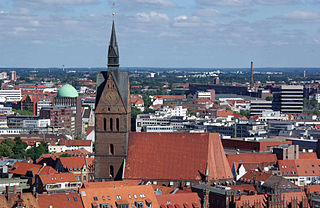
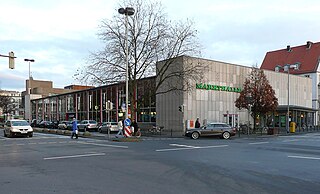
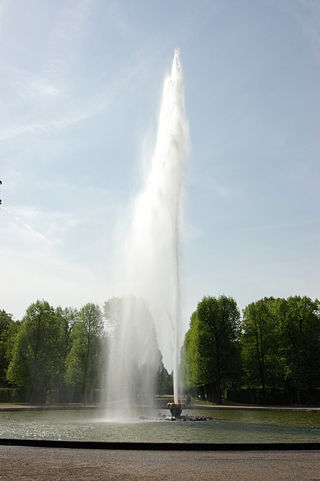
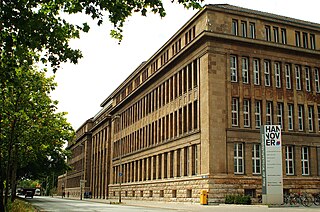
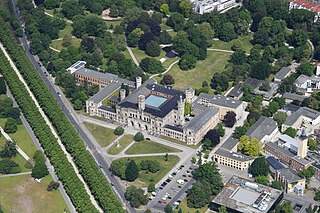
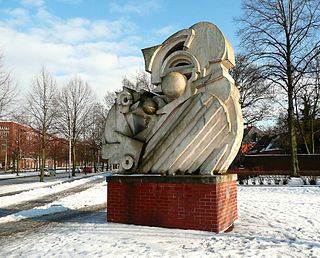
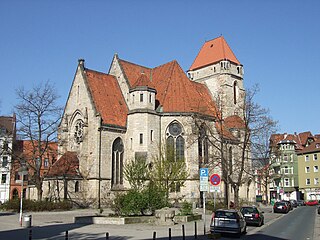
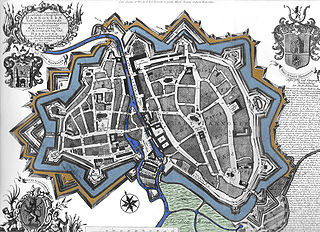
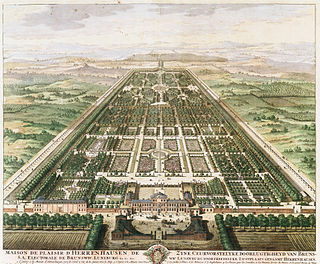
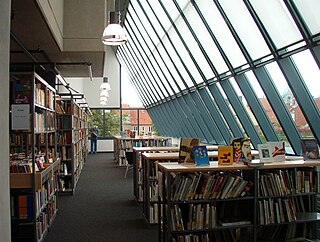
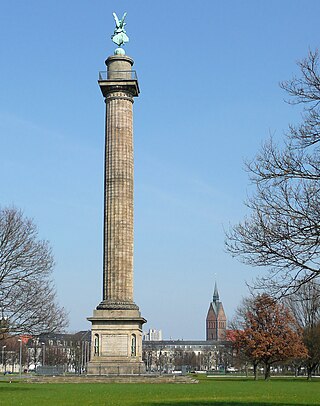
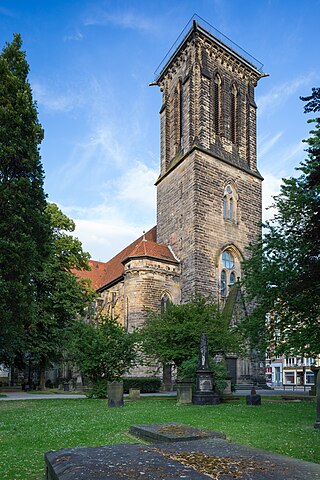
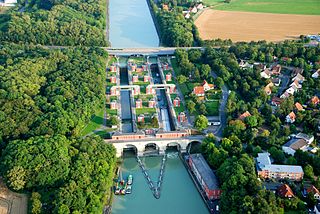
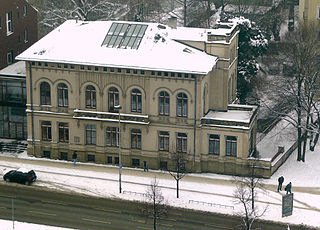
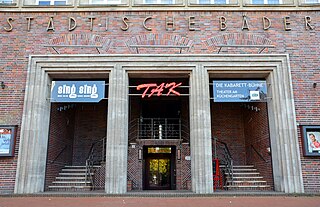
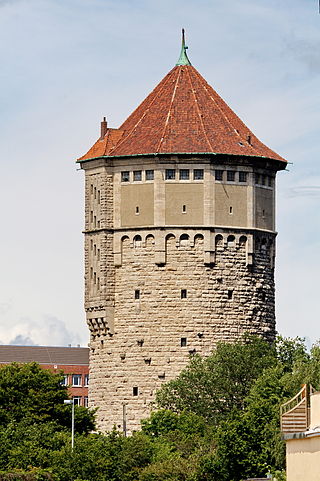
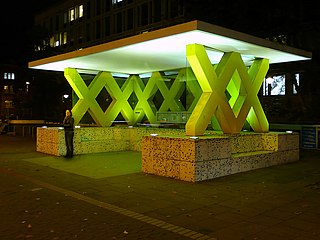
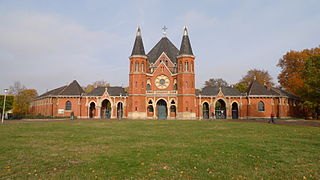
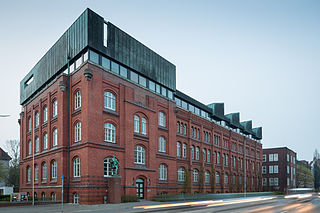
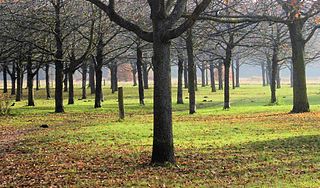
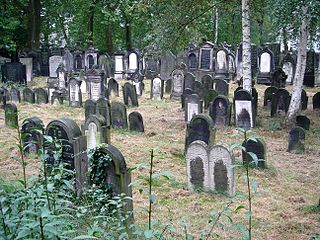
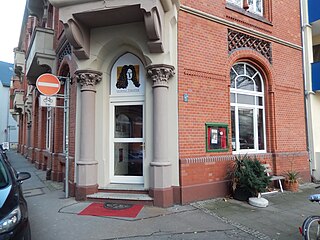
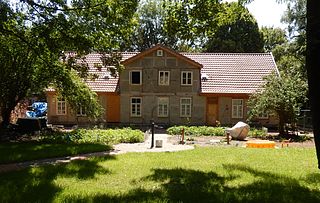
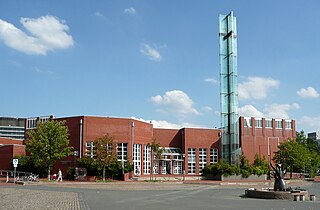
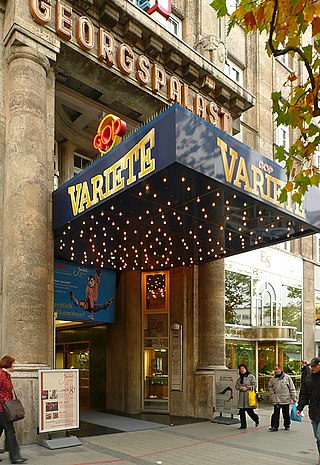
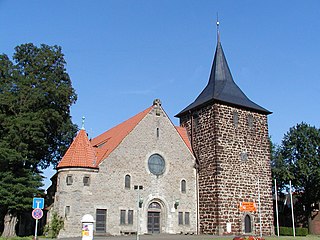
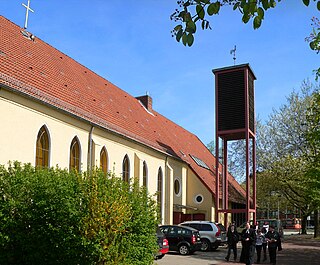
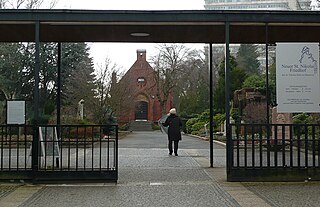
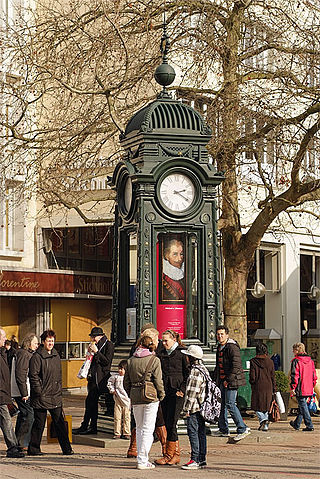
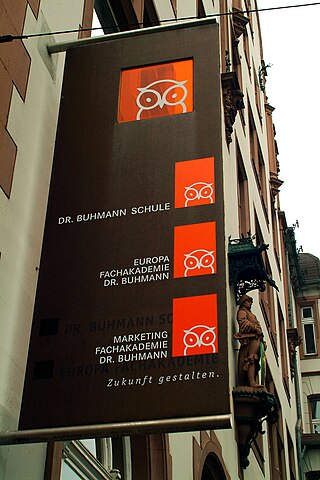
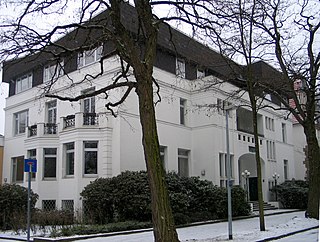
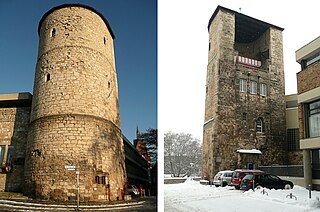
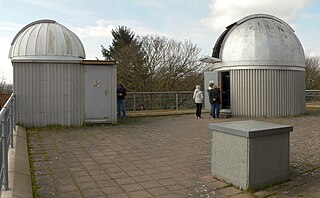

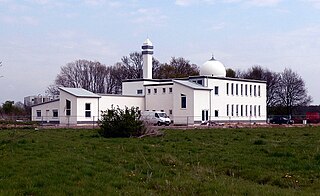
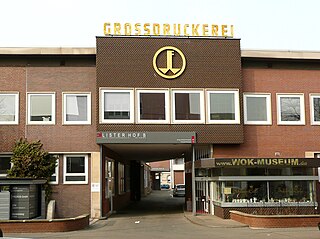
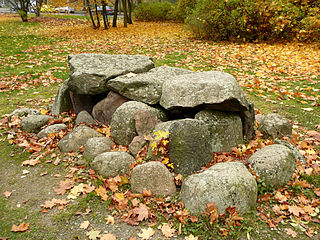
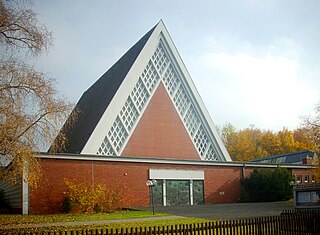
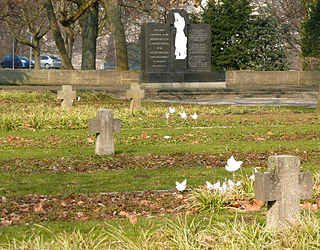
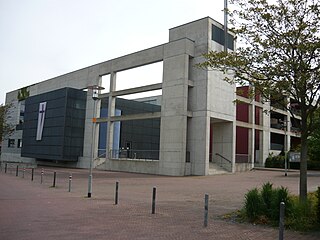
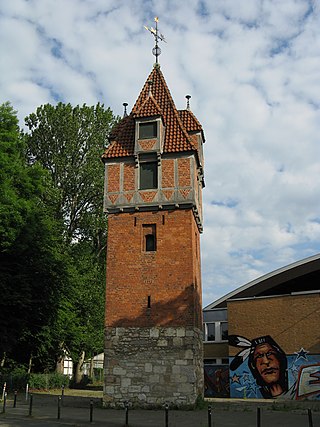
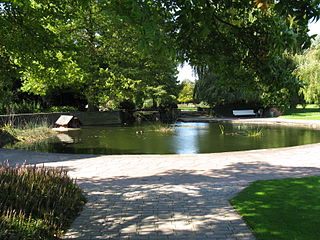
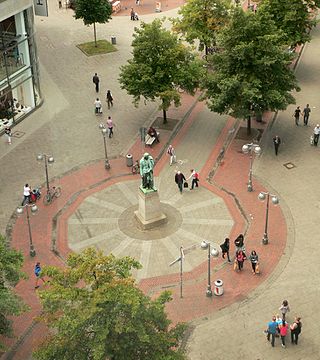
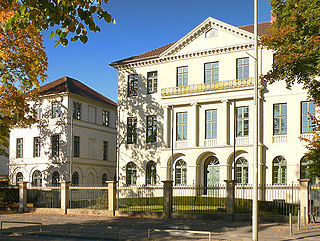
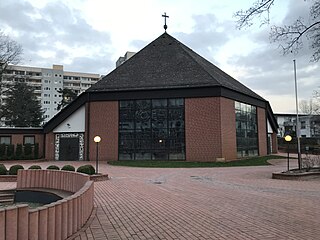
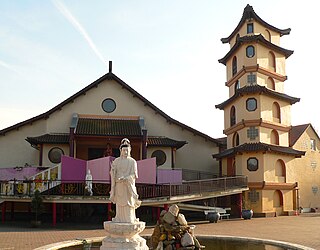
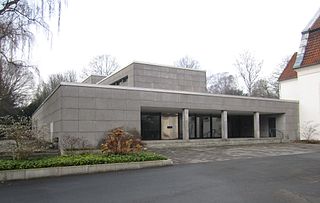
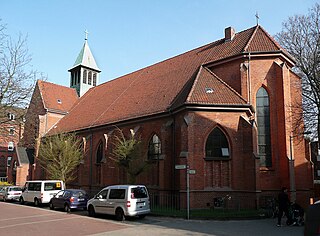
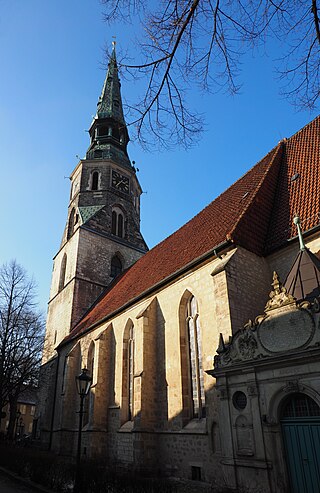
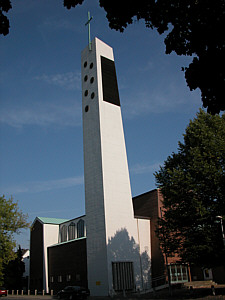
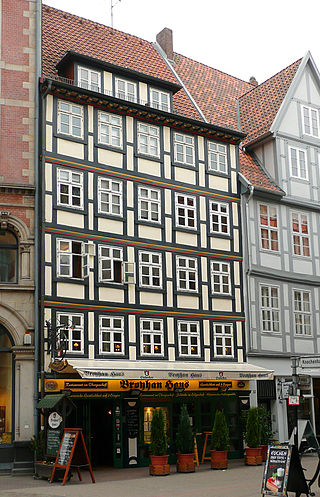
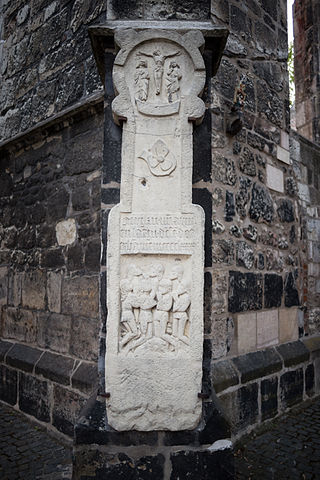
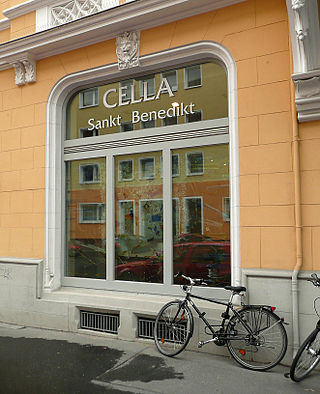
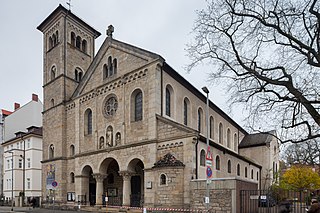
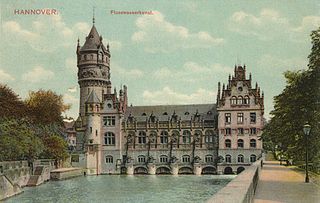
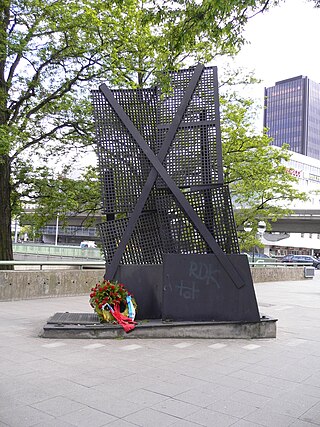
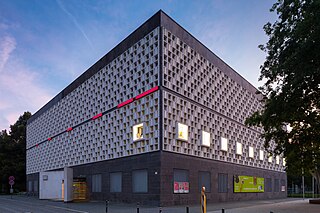
.jpg)
